What's New
Displaying results 3921 - 3930 of 4052
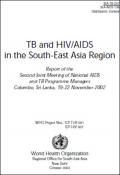
Resource | Publications,
Tuberculosis and HIV/AIDS are both major public health problems in the South-East Asia Region of WHO. Of the 20 million people suffering from active TB globally, 8 million are in this Region. Each year, three million new cases of TB are added and nearly three-quarters of a million die of the disease. At the same time, the Region is home to nearly 6 million people living with HIV/AIDS or nearly 18% of PHA, the largest proportion following sub-Saharan Africa, making it the second highest Region affected by HIV in the world.
The SEA Region has been the first to initiate joint annual meetings for the national TB and HIV programme managers of Member Countries. This has led to laying the foundation for collaboration between the two programmes. The second joint meeting of National HIV/AIDS and TB Programme Managers from Member Countries in the SEA Region was held between the 19-22 November 2002 at Colombo, Sri Lanka.
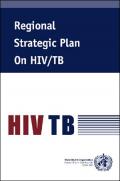
Resource | Publications,
The HIV epidemic has posed major challenges to tuberculosis (TB) control efforts globally. Increasing TB case rates over the past decade in many countries in sub- Saharan Africa are largely attributable to the HIV epidemic. The extent of the HIV/TB epidemic in South-East Asia will depend on the future course of the HIV epidemic, as well as on efforts to control TB. Preventing HIV-associated TB means going beyond the full implementation of DOTS. It includes preventing HIV infec- tion, preventing progression of latent TB infection to active disease and the provision of HIV/AIDS care and antiretroviral treatment (ART).
The goal of the HIV/TB strategy is to reduce HIV/TB- associated morbidity and mortality through collaboration between national AIDS and national TB programmes. The objectives are (1) to decrease the burden of TB among People Living with HIV/AIDS (PLWHA) and (2) to decrease the burden of HIV in TB patients.
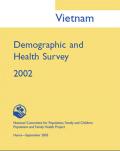
Resource | Publications,
The 2002 Vietnam Demographic and Health Survey (VNDHS 2002) is a nationally representative sample survey of 5,665 evermarried women age 15-49 selected from 205 sample points (clusters) throughout Vietnam. It provides information on levels of fertility, family planning knowledge and use, infant and child mortality, and indicators of maternal and child health. The survey included a Community/ Health Facility Questionnaire that was implemented in each of the sample clusters.
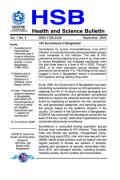
Resource | Publications,
Surveillance for human immunodeficiency virus (HIV) infection is conducted annually among population groups most vulnerable to HIV infection. The rate of HIV prevalence among injecting drug users in an urban area in central Bangladesh has increased significantly over the past three years to a level of 4% in 2002. Through 2002, in all other population groups sampled, HIV prevalence has remained <1%. The findings of this report suggest a trend in Bangladesh toward a concentrated HIV epidemic among injecting drug users.
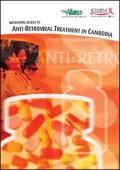
Resource | Publications,
Cambodia is often cited as an example of how an effective multi-sectoral response to HIV, with strong political commitment and effective co-operation between government, nongovernmental organisations (NGOs), and international organisations, can impact on the spread of infection. Cambodia has an HIV/AIDS prevalence of 2.6% in the adult population (15-49 years). Government data indicates that HIV prevalence rates in some of the populations under surveillance appear to be declining. However, the current data indicates that HIV/AIDS is not uniformly distributed throughout the country and numbers of cases of AIDS and AIDS-related deaths continue to increase.
This report, building on the strengths of Khmer HIV/AIDS NGO Alliance (KHANA) and its partners, focuses on the current and future opportunities for KHANA, and other NGOs, to support access to ARV treatment for people with HIV. Recommendations are given with regard to use of existing sources of ARV, sources for increasing availability of ARV, and models for provision of ARV most likely to bring broad benefits to patients, as well as to prevention efforts, and to the health system in general.
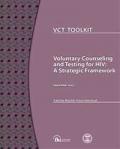
Resource | Tools,
The HIV epidemic continues to spread at an alarming rate, with over 14,000 new infections per day. While the epidemic is now spreading rapidly in some parts of Asia and Latin America and Caribbean, sub-Saharan Africa continues to bear the greatest burden of disease. HIV prevalence exceeds 30 percent among sexually active adults in some African cities, and AIDS is the leading cause of death in major cities within sub-Saharan Africa.
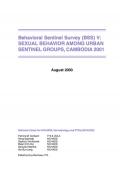
Resource | Publications,
With USAID funding Family Health International (FHI) launched a series of sexual behavior surveys in developing countries called Behavioral Surveillance Surveys (BSS). These repeated cross-sectional surveys of behaviors in sentinel groups are now considered as an essential component of second generation HIV surveillance systems. These surveys are designed to be administered on a regular basis (either annually or bi-annually) to provide data on changes of risk behaviors over time. Cambodia is fortunate to have one of the most comprehensive BSS in the world, established in 1997 and repeated annually. The 2001 BSS is the fifth round.
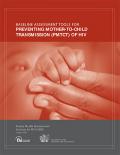
Resource | Tools,
Now that there are cheap and effective interventions to prevent mother-to-child transmission of HIV (PMTCT), programs are rapidly being planned and introduced to make these activities more widely available in developing countries. Implementing these programs requires understanding the quality and scope of existing MCH and maternity care services, as well as effective, continual monitoring and evaluation. The present assessments tools are designed to respond to this need.
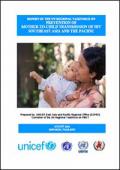
Resource | Publications,
UNICEF EAPRO convened the UN Regional Taskforce meeting in Bangkok from 27-29 August 2003 as part of ongoing efforts to support countries to respond strategically and effectively to HIV/AIDS, to share the lessons learned between countries and from clinical trials and programme initiatives, and to meet the Millennium Development Goals, and the Declaration of Commitments arising from the 2001 UN General Assembly Special Session on HIV/AIDS.
There were a total of 23 participants from nine countries and 10 resource persons from regional technical organizations.
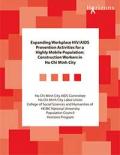
Resource | Publications,
The HIV epidemic in Vietnam is growing, and promotion of prevention behavior among vulnerable populations, such as migrant workers, is becoming increasingly critical. In Ho Chi Minh City (HCMC), the locus of the epidemic in Vietnam, efforts have been under way for several years to implement prevention efforts for migrant worker populations.
Led by the HCMC AIDS Committee and HCMC Labor Union, the main activity has utilized volunteer health communicators (HC) to visit workplaces and conduct HIV education activities. However, these efforts have reached only a relatively small number of the intended audience, and the impact of the current program is unclear. Local authorities want to scale up their efforts but require information on the most effective and least costly activities, as well as their potential for scale up.





